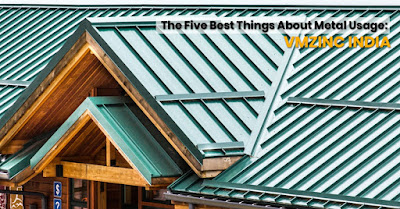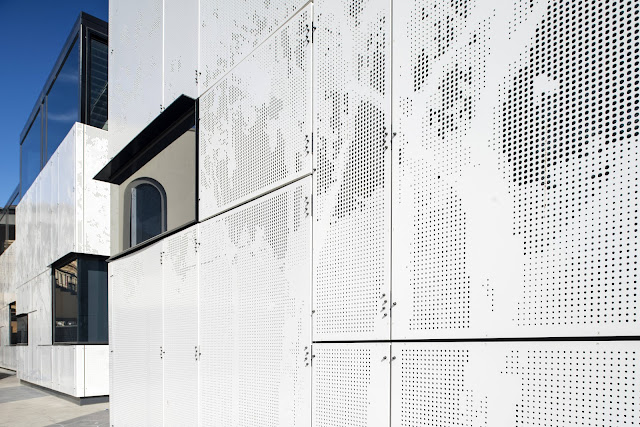Choose the Right Metal & Finishes for Your Home Facades
When contemplating design choices for a new standing-seam roof or wall panel system, what is the first metal that comes to mind? Are steel and aluminium your first options, or do you prefer unusual metals like copper or stainless steel? When was the last time you thought about zinc? Only a few of the advantages of this attractive metal that are driving its growing popularity for building cladding are its manufacturability and resilience to weathering. Here are the benefits of using zinc for facade design
Longevity and Beauty
Zinc's physical characteristics make it a highly distinctive and valuable material for facade design. Many of us are acquainted with the oxidation process of steel, which results in the formation of rust. When rust forms on the surface of the steel, it will continue to corrode, ultimately making it useless. Zinc, on the other hand, can withstand continuous corrosion owing to a highly unusual reaction.
Green and Clean
For a variety of reasons, zinc is also a highly ecologically beneficial metal. A 100% recyclable metal may be utilized indefinitely. Zinc is also a fungi stat, an agent that prevents mould, mildew, and fungus from reproducing. This may significantly decrease the danger of moss or even black mould developing on the outside of a structure in places where the metal comes into touch. Interestingly, rainfall run-off from zinc is pure, unlike rainwater run-off from other metals, such as copper, which contains fungicides.
Manufacturability
Zinc is a soft and pliable metal that may be easily moulded into desired forms used in metal facades. Because of this property, zinc may be utilized in a variety of unique architectural applications. However, it should be noted that when exposed to temperatures below 50 degrees Fahrenheit, zinc becomes considerably more brittle. Forming zinc at these temperatures will lead it to break exceptionally readily.
Thermal Expansion and Contraction
It is essential to allow maximum thermal movement in all standing-seam metal roofs, regardless of the material used, so that the panel may expand and contract without limitation. It is essential to allow enough thermal movement for zinc panels, which may expand twice as far as a steel panel.
Galvanic Corrosion
When developing zinc panel or trim applications, galvanic corrosion must also be addressed. When two different metals with a high electric potential come into touch with one other in the presence of an aqueous solution, galvanic corrosion occurs—the more significant the electric potential difference between the metals, the more intense the galvanic response. A galvanic corrosion chart can help you determine which metals will react with each other.
Chemical Compatibility
Other factors to consider when developing zinc applications include the possibility of degradation due to abrasive or corrosive substances. Zinc should not be placed on saline sea coastlines that get little or no rainfall since salt spray in the atmosphere may negatively affect exposed zinc material if it is not rinsed away by rain regularly.
Zinc is an aesthetically attractive, long-lasting, and valuable option for metal cladding. When placed correctly, necessary measures are made to ensure its surroundings are acceptable. Few metals that are feasible for architectural design provide such an appealing variety of properties, making zinc a prominent option for many designers. Its architectural appeal is increasing as more designers recognize the advantages of this precious metal. So, whether you are an owner, designer, or builder, consider zinc the next time you need to select metal for the metal facade cladding.




Comments
Post a Comment